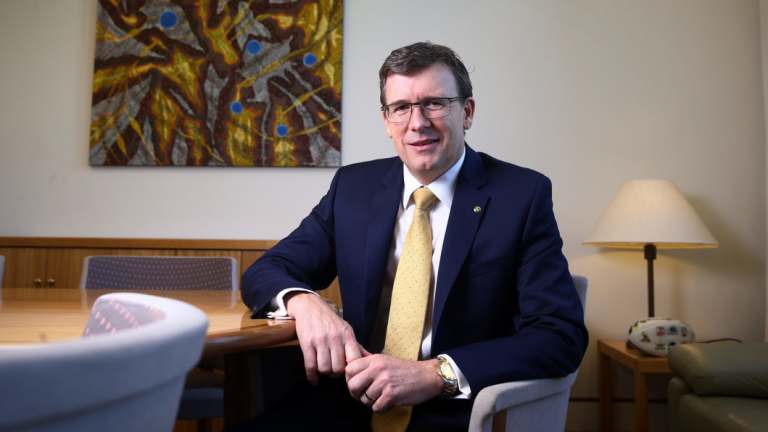Councils get visa powers to attract migrants as population passes 25 million
Local councils will be enlisted as recruiters for nurses, tradies and farmers to help push new migrants into regional areas under changes to Australia’s migration program that give business sponsorship powers to local government.
The changes mean thousands of visas will be tied to living in an area rather than a particular employer as Canberra wrestles with a regional skill shortage and Melbourne and Sydney struggle to catch up with the infrastructure demands of a surging population.
Australia’s population hit 25 million at 11pm on Tuesday, 33-years-ahead of the Bureau of Statistics’ 1998 estimate. Department of Home Affairs figures show 87 per cent of the 112,000 skilled migrants that arrived last year settled in Sydney or Melbourne, while rural areas struggle to find workers.

Citizenship Minister Alan Tudge said the designated area migration agreement “will cover all industries and positions where there are identified and proven shortages.”
Councils and other legal bodies would be able to apply for the negotiated agreements if they prove they have a worker shortage. The council would be able to sponsor overseas workers from multiple occupations and be responsible for marketing and recruiting for their areas internationally.
Coalition MPs have also mooted proposals to tie migrants for longer periods of time to employers in rural centres after Home Affairs figures showed one in 10 migrants moved to a major city within 18 months of settling under the regional sponsored migration scheme.
Nationals MP David Gillespie has previously raised the effectiveness of the foreign doctor program where visas are linked to Medicare billings in a regional centre for up to a decade.
Creating incentives for migrants to receive Medicare-eligible treatment in a particular area is also an option. The Bureau of Statistics bases its internal migration data off Medicare records. Medical treatment is seen as among the most reliable indicators of where a person lives.
“If we get a better distribution then it will take pressure off those big capital cities,” he told the Business Council on Tuesday.
Australian Chamber of Commerce and Industry chief James Pearson said the Sydney-Melbourne centric discussion was “not a migration problem but an infrastructure one”.
“Global cities in advanced economies throughout the world are often much larger than Sydney and Melbourne,” Mr Pearson said.
“The debate on migration and population has to include what is Australia’s vision for itself: do we want to be a declining economic power or one of the bigger players with influence?”
He accused the Turnbull government of failing to keep up public transport investment while cities expanded. The government says it has invested $75 billion in infrastructure with the states and territories.

“Instead of seeing public transport as a photo opportunity, [Malcolm] Turnbull should understand it for what it is – an essential public service that will become increasingly important as our population continues to grow over coming decades,” Mr Albanese said.
Fairfax Media revealed in July the reduction in the permanent migration rate from 190,000 to 162,000 will cost the federal budget $500 million a year in tax revenue.
“Effectively, if a business cannot find an Australian and is willing to pay someone over $145,000 per annum, then they will be able to sponsor them into Australia,” said Mr Tudge.
“The rationale is that it is highly likely that the person will be an enormous asset to Australia if a business is willing to pay that sort of money.”
